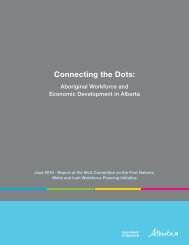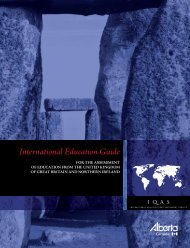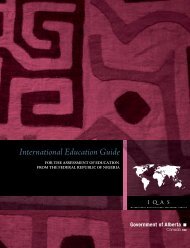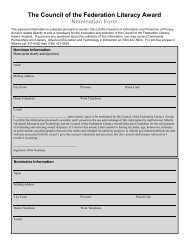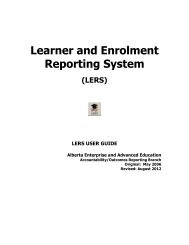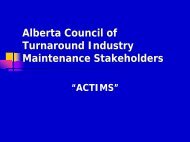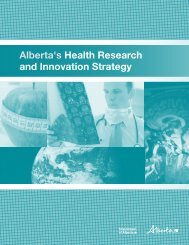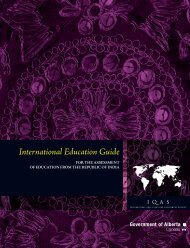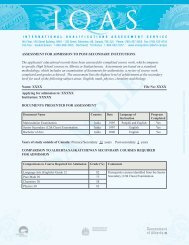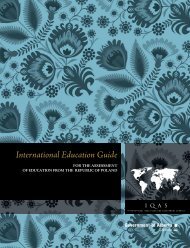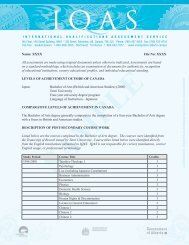International Education Guide - Enterprise and Advanced Education ...
International Education Guide - Enterprise and Advanced Education ...
International Education Guide - Enterprise and Advanced Education ...
Create successful ePaper yourself
Turn your PDF publications into a flip-book with our unique Google optimized e-Paper software.
INTERNATIONAL EDUCATION GUIDE for the assessment of education from the Islamic Republic of Pakistan<br />
.47<br />
Directorates of Technical <strong>Education</strong> (in Punjab <strong>and</strong><br />
Sindh) <strong>and</strong> the Directorate of Technical <strong>Education</strong> <strong>and</strong><br />
Manpower Training (in NWFP) administer vocational <strong>and</strong><br />
technical education institutions such as technical secondary<br />
schools, polytechnics <strong>and</strong> commercial institutes. Since 2002<br />
some administrative responsibilities have been devolved to<br />
the district governments.<br />
Punjab <strong>and</strong> NWFP are attempting to place the technical<br />
<strong>and</strong> vocation education system under one management<br />
structure called the Technical <strong>Education</strong> <strong>and</strong> Vocational<br />
Training Authority. The Punjab TEVTA was established<br />
in 1999, <strong>and</strong> the NWFP TEVTA in 2002.<br />
In Balochistan, the small number of polytechnics <strong>and</strong><br />
commercial institutes are administered by the Directorate<br />
of Colleges (Technical Wing) <strong>and</strong> affiliated with the Board<br />
of Intermediate <strong>and</strong> Secondary <strong>Education</strong>, which conducts<br />
major examinations <strong>and</strong> issues certificates such as the DAE.<br />
Institutions<br />
Vocational <strong>and</strong> technical education <strong>and</strong> training<br />
institutions fall roughly into three categories—formal, nonformal<br />
<strong>and</strong> informal. This chapter mainly deals with the<br />
formal <strong>and</strong> non-formal sectors.<br />
1. The formal sector includes institutions <strong>and</strong> programs<br />
under the supervision of the MOE, provincial<br />
education departments, <strong>and</strong> boards of technical<br />
education, such as:<br />
• polytechnics offering three-year Diploma of<br />
Associate Engineer (DAE) programs. Some are<br />
called monotechnics as they offer programs in only a<br />
single technology.<br />
• colleges of technology (upgraded from<br />
polytechnics), which are affiliated to universities <strong>and</strong><br />
offer both DAE <strong>and</strong> BTech programs (the BTech<br />
was introduced in 1973 as a post-diploma degree)<br />
• commercial institutes offering certificate <strong>and</strong><br />
diploma programs in business <strong>and</strong> commerce<br />
• government vocational (training) institutes<br />
offering trade certificate programs<br />
• technical secondary schools <strong>and</strong> higher secondary<br />
schools offering vocational <strong>and</strong> technical course<br />
groups in school education<br />
Many institutes, such as polytechnics, offer both<br />
technical education <strong>and</strong> lower-level vocational courses.<br />
2. The non-formal sector includes institutions <strong>and</strong><br />
programs under the supervision of the Ministry of<br />
Labour <strong>and</strong> Manpower, provincial departments of<br />
labour <strong>and</strong> manpower, <strong>and</strong> various other federal<br />
<strong>and</strong> provincial agencies. There is little inter-agency<br />
coordination of policy <strong>and</strong> st<strong>and</strong>ards. Included are:<br />
• technical training centres <strong>and</strong> vocational training<br />
centres offering trade certificate programs<br />
• apprentice training centres established in large <strong>and</strong><br />
medium-sized employers<br />
3. The informal sector includes institutions <strong>and</strong> programs<br />
that do not belong to either the formal sector or the<br />
non-formal sector, for example, private institutions,<br />
workplace training at government enterprises <strong>and</strong> private<br />
companies, <strong>and</strong> the traditional tutor–pupil method of<br />
training. They generally have no educational requirement<br />
for admission, use non-st<strong>and</strong>ardized curriculum <strong>and</strong><br />
offer flexible schedules to suit student needs.<br />
Technical <strong>Education</strong><br />
Technical education trains technicians for mid-level<br />
supervisory jobs. It mainly operates at the higher secondary<br />
level <strong>and</strong> above, with entry based on the completion of<br />
secondary school (Grade 10).<br />
Diploma of Associate Engineer (DAE)<br />
DAE programs are offered by polytechnics <strong>and</strong> colleges of<br />
technology. The first polytechnic was established in Karachi<br />
in 1953, <strong>and</strong> the first polytechnic for women in Lahore in<br />
1967. There are now 200 polytechnics <strong>and</strong> monotechnics in<br />
the country, including 15 for women, with a total enrolment<br />
of about 60,000.<br />
The Diploma of Associate Engineer involves three years of<br />
full-time study. Students may have the option of completing<br />
the program in four years through part-time evening study.<br />
There are also some specialized DAE programs that involve<br />
four years of full-time study.<br />
Entry to DAE programs is based on possession of the<br />
Secondary School Certificate (science group), although<br />
a small number of applicants hold a Higher Secondary<br />
Certificate. The provincial Boards of Technical <strong>Education</strong>




